
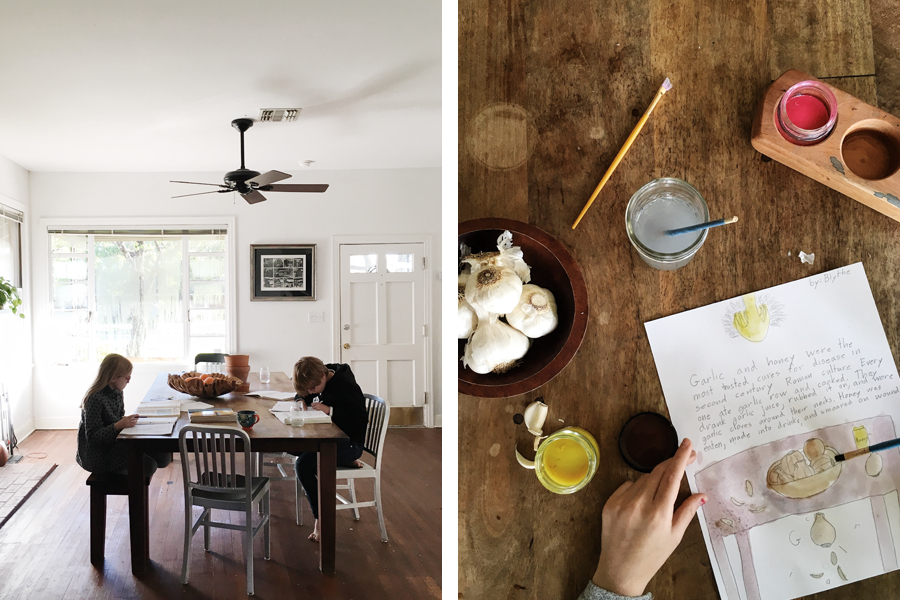
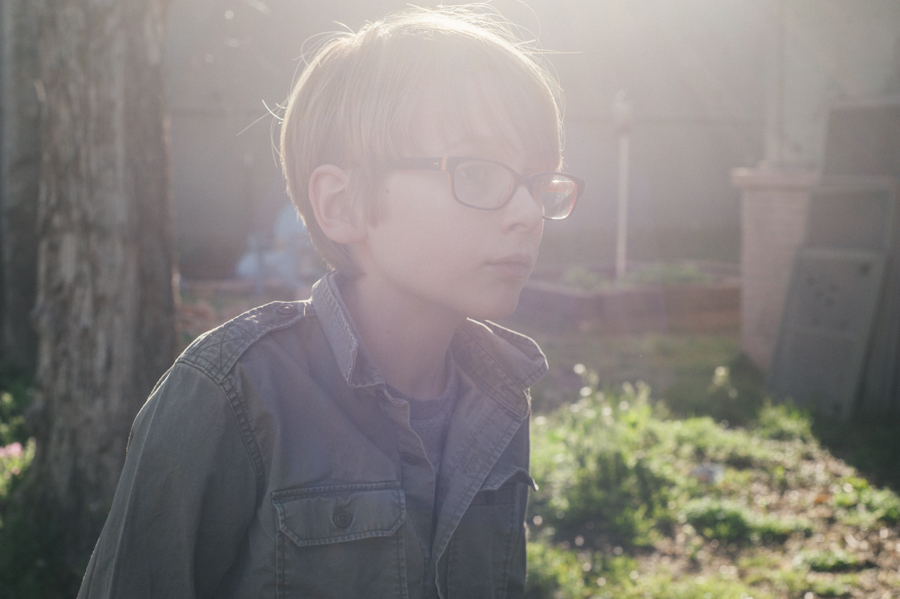
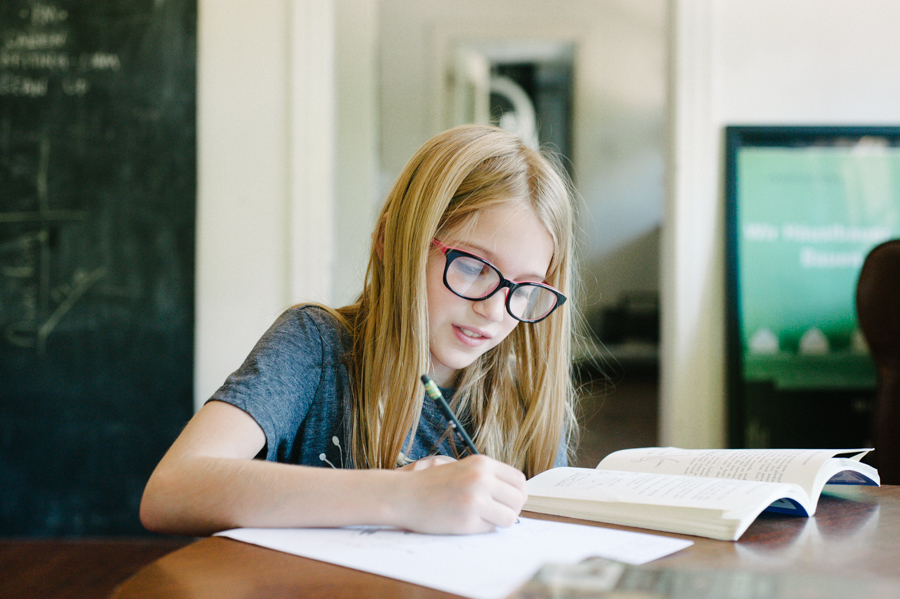


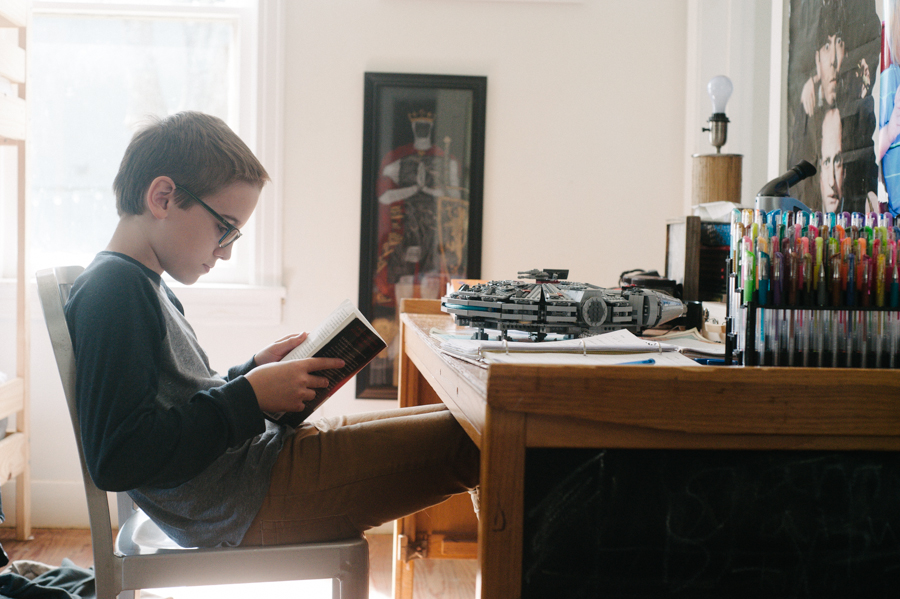
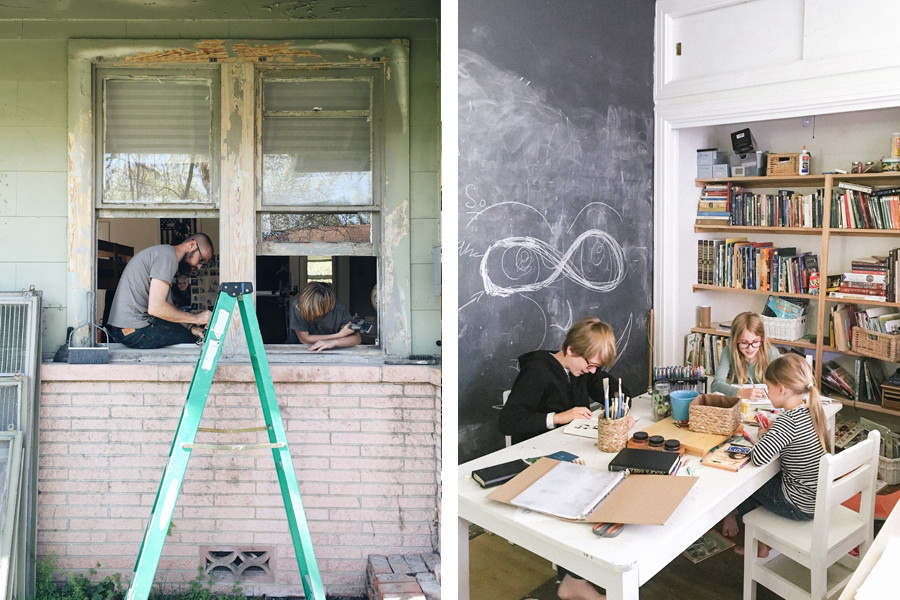


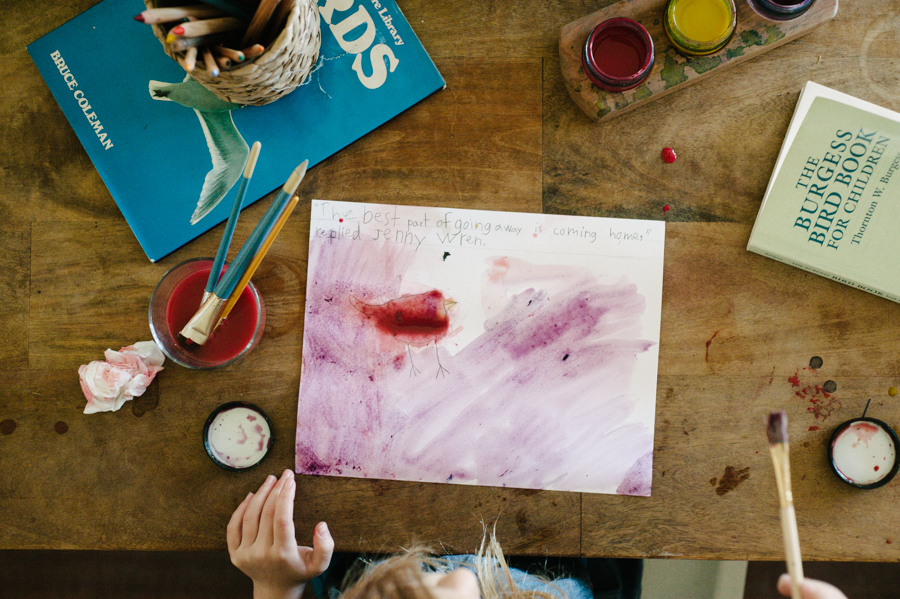
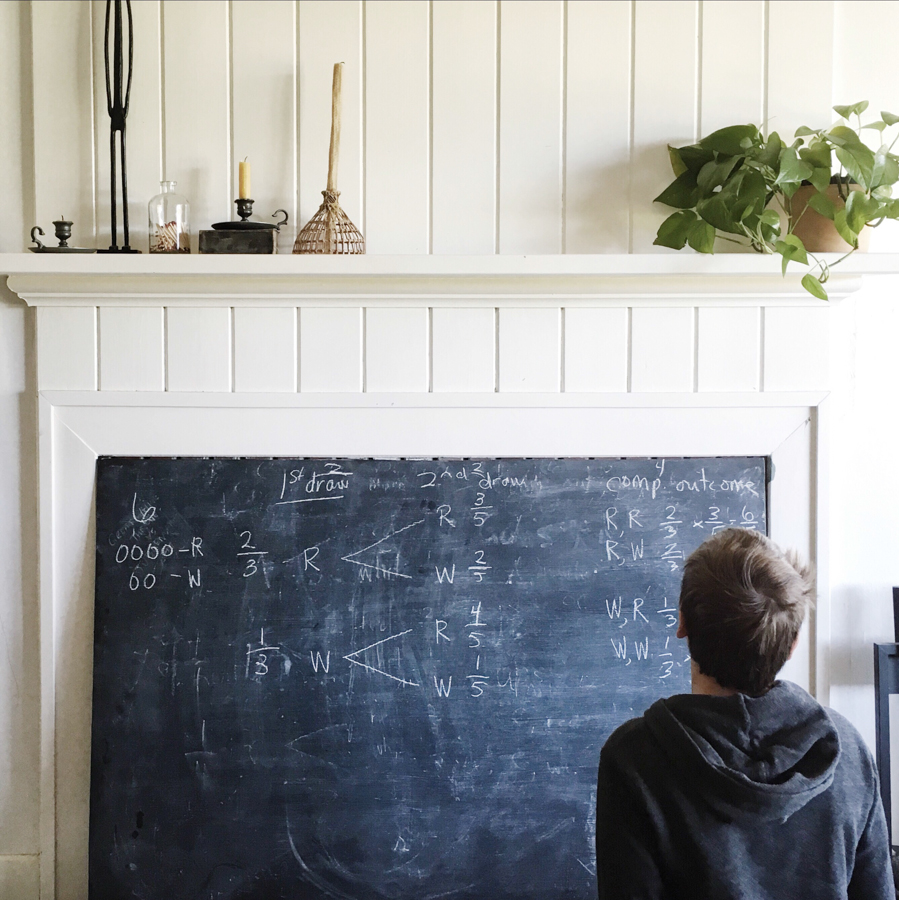

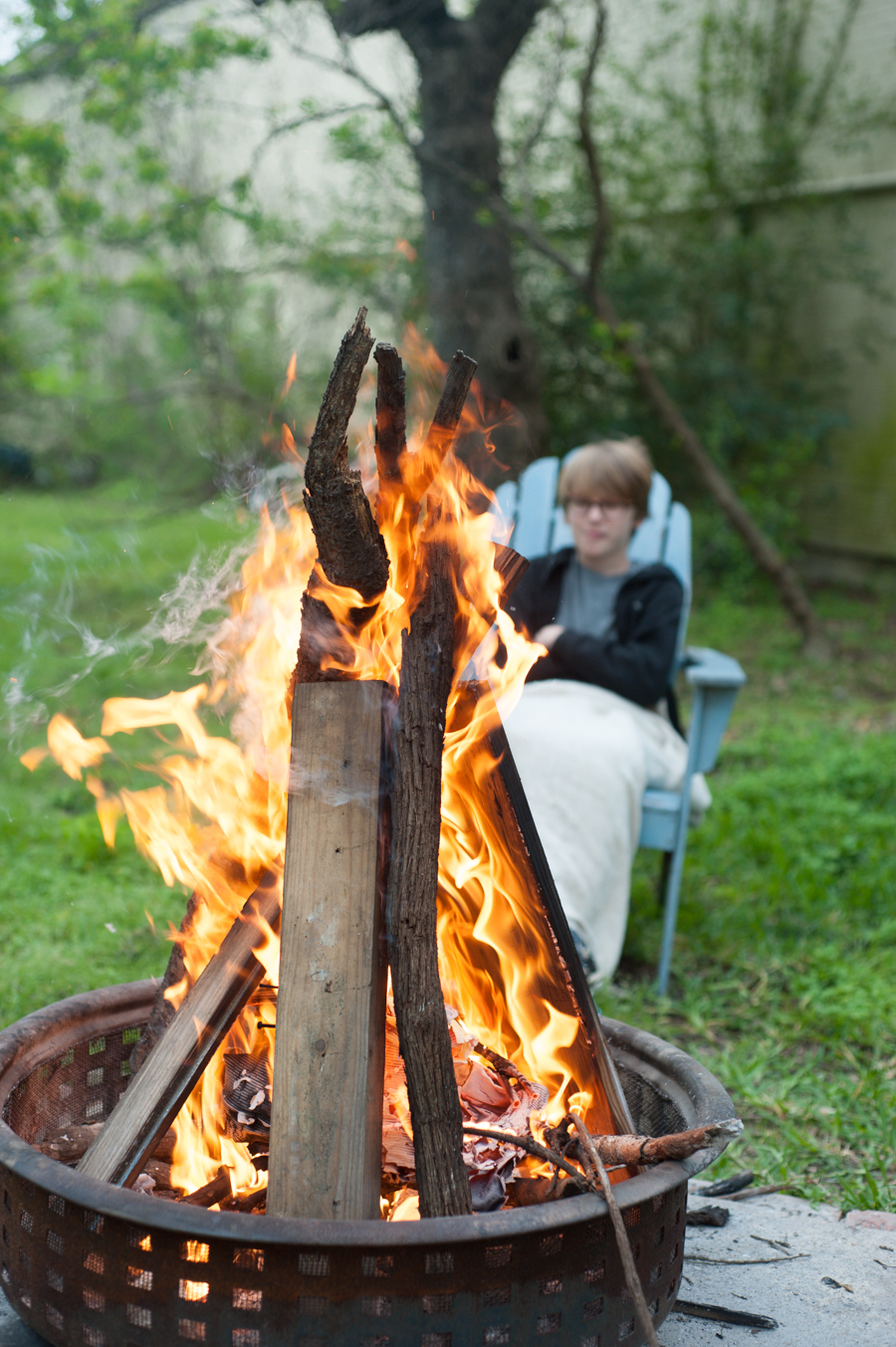
Rivers know this: there is no hurry. We shall get there some day.
― A.A. Milne, Winnie the Pooh
_____________________________
spring herbs + tales of Benjamin Bunny
a small lesson about finding God in the ordinariness
the medicinal properties of garlic and honey
Burke, bathed in light on his 11th birthday
a brief study in early sports medicine, illustration and copywork
busy hands, doodling and practicing cursive
Olive, at sunset on her 7th birthday
The Martian and a welcome break from Latin
endless amounts of time scraping paint
afternoon read-a-loud, led by Burke
focused, independent math work
an owlet resting just over our shoulders during dinner
Olive’s introduction to Jenny Wren and The Burgess Bird Book for Children
practicing compound probability
sleepy morning reading practice
regular fires in the backyard again
more images #cloisteredaway_homeschooling
_________________________________________
The quietness of this space and the fact that I am writing about March in mid-April speaks loudly to the busyness here the last several weeks. March is rarely quiet in our home, as Spring’s arrival brings much energy and many TO DOs. We celebrated our two March babies at the beginning of the month with simple family dinners, desserts, and balloons. On a whim, we opted to stay home for spring break this year and re-paint the house instead. With combined efforts, we estimated the scraping, repairing, and painting to take an upwards of two or three weeks–ha! Four weeks later, we’re still in the scraping phase. The lesson? Don’t underestimate the time it takes to scrape paint. The children are helping with the work (when appropriate), and since this project stretches beyond their typical responsibilities, we decided to pay them for a bit of it, offering them a different sort of education in business, budget, and economy. We hope to empower each of them with entrepreneurial spirit and also the wisdom how to manage such things.
In terms of our studies, I have felt the need for more focus and steadfastness in light of all the chaos of our environment, part of the other reason for quietness here. These sort of large home projects tend to distract me, diverting my attention and sending our school days spinning in disorder. For now, I’m learning how not to chase rabbits. March is a climatic point in our academic year. Enthusiasm begins to wane and the lessons somehow become more concentrated with newness and complexity. It’s easy to look for distractions, whether in home projects or online work. Instead, I have sensed this clear need to nurture order and routine with the kids, holding firmer boundaries of time. Looking back, I’m grateful for the levels of peace and focus it brought to our home, even in so much undone-ness.
The kids and I have been reading journey narratives aloud together: Pilgrim’s Progress, first thing in the morning with poems just after breakfast, and The Wingfeather Saga, at the end of the day just before bedtime. Although this wasn’t initially intentional, I love that we are experiencing the journey of an individual in one and the journey of a family in the other. They’ve offered such great fodder and rhetoric for our daily living about choosing the difficult and straight path, about individual and family identity, about purpose. I highly recommend both for older children (and adults). Although these beginning/closing reading periods do require a discipline of sorts, they are so grounding for our routine, a soft beginning and end to the day together. On a side-note, when my children seem more quarrelsome or nit-picky with one another, reading aloud can also be a balm of sorts, a practical way of calming and bonding them. So can play time outdoors.
As for specific studies in March, Olive and I still mostly focused on her reading fluency. Each week, she had one practice story or nursery rhyme, which we used for spelling and reading often taken from Reading Lessons Through Literature. She also practiced a bit of math daily, which seems almost intuitive for her, and she’s quickly moved ahead. She loves numbers. We also began The Burgess Bird Book together at the end of the month, aiming to read a chapter a few times a week. She copies a sentence from it or from another picture book we’ve read aloud 2-3 times a week. The rest of the time she plays, mostly pretend and often outdoors in a fort she a Blythe made in our bamboo.
Blythe and Burke finished their study of Galen (a physician to four Roman emperors) and the beginnings of Western medicine this month, and we loved learning so many new things about the origins of medicine, from how travel and education impacted Galen’s learning, to how he studied the body in an era before autopsies were permissible, and so much more. We’ve been loosely using Beautiful Feet’s History of Science study for their science/history this year, and although we’re moving slowly through it, we love it! They’re also both practicing grammar and writing with their independent reading three-four time a week (My Side of the Mountain and Heidi for Burke in March; The Secret Garden for Blythe in March and April), which I feel more disciplined about for them as I’m walking through Latin studies with Liam now. As a short encouragement, a firmer grasp of language early on opens so many more doors to understanding language later.
Liam, Burke, and Blythe are both closing another level in math, and I’m beginning to take a bit of time for quick review a couple of times a week, feeling out for soft spots or holes in concepts. We use Saxon books, which although admittedly a bit boring, thoroughly spiral through concepts again and again to build a stronger foundation. Math is an area in which I feel the least intuitive and I wanted to make sure they really know it well. At the back of levels 5/4 and up is a “supplemental practice” which is great for the purpose of review. On a side note, unless you have a child who loves worksheets, I recommend a different curriculum for the little years (grade 3 and younger), something more playful and artistic like Waldorf or Montessori methods. By levels 5/4 (4th grade math), my children have been ready to transition and learn more discipline about book work.
Liam moved into a weekly Challenge A class with Classical Conversations in January, an unplanned move for our family, one which merits a blog post all of its own. This spring he’s been working through sketching and memorizing systems of the body, memorizing and sketching the geography of the Eastern hemisphere, learning logical fallacies, writing persuasive papers, translating Latin verbs and nouns, and beginning pre-Algebra. It’s a lot of work, but he loves it–even though sometimes he doesn’t want to do it. He is still twelve after all. Wink.
Here’s the books we read in March. I included a list of our favorite picture books (mostly Blythe and Olive) we read aloud too.
MARCH BOOKS
Liam| Crispin: The Cross of Lead | The Wingfeather Saga: The Warden and the Wolf King | The Martian | The Fallacy Detective
Burke | My Side of the Mountain | Galen | Heidi | Calvin and Hobbes
Blythe | Galen | The Secret Garden | Ivy and Bean #6 | Aesop’s Fables | The Picture History of Great Inventors
Olive | Little Bear stories | Burgess Bird Book for Children (RA) | various beginning readers
Picture Books We Loved | Ike’s Incredible Ink | Sorry! | Good dog, Carl | The Curious Garden | Miss Rumphius | Island Boy
Family Read-a-loud | Prince Caspian (audiobook) | The Wingfeather Saga: On the Edge of the Dark Sea of Darkness | Pilgrim’s Progress
Myself | All the Light We Cannot See | Teaching From Rest | New and Selected Poems, Vol. 2 | Simple Matters


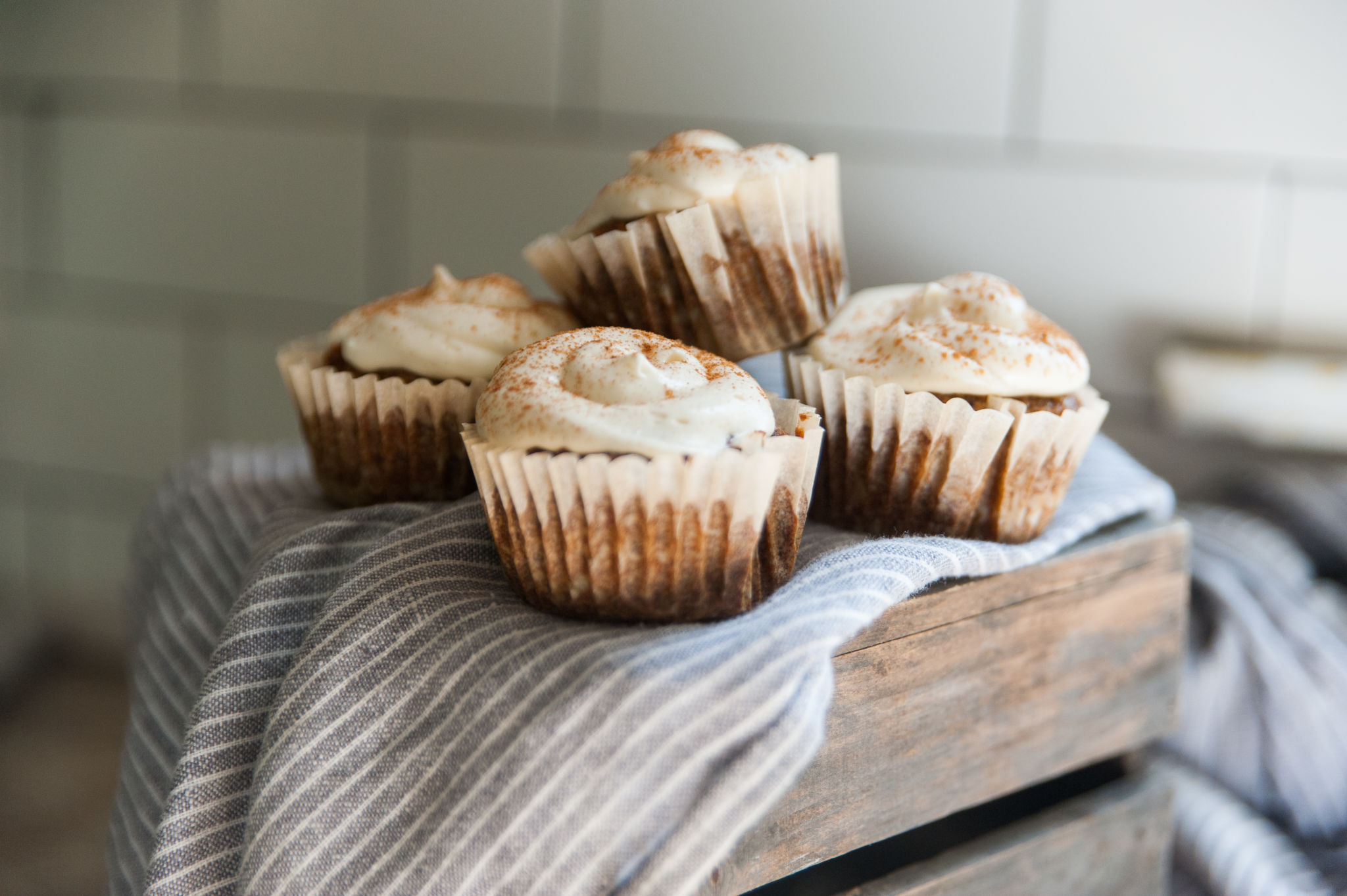
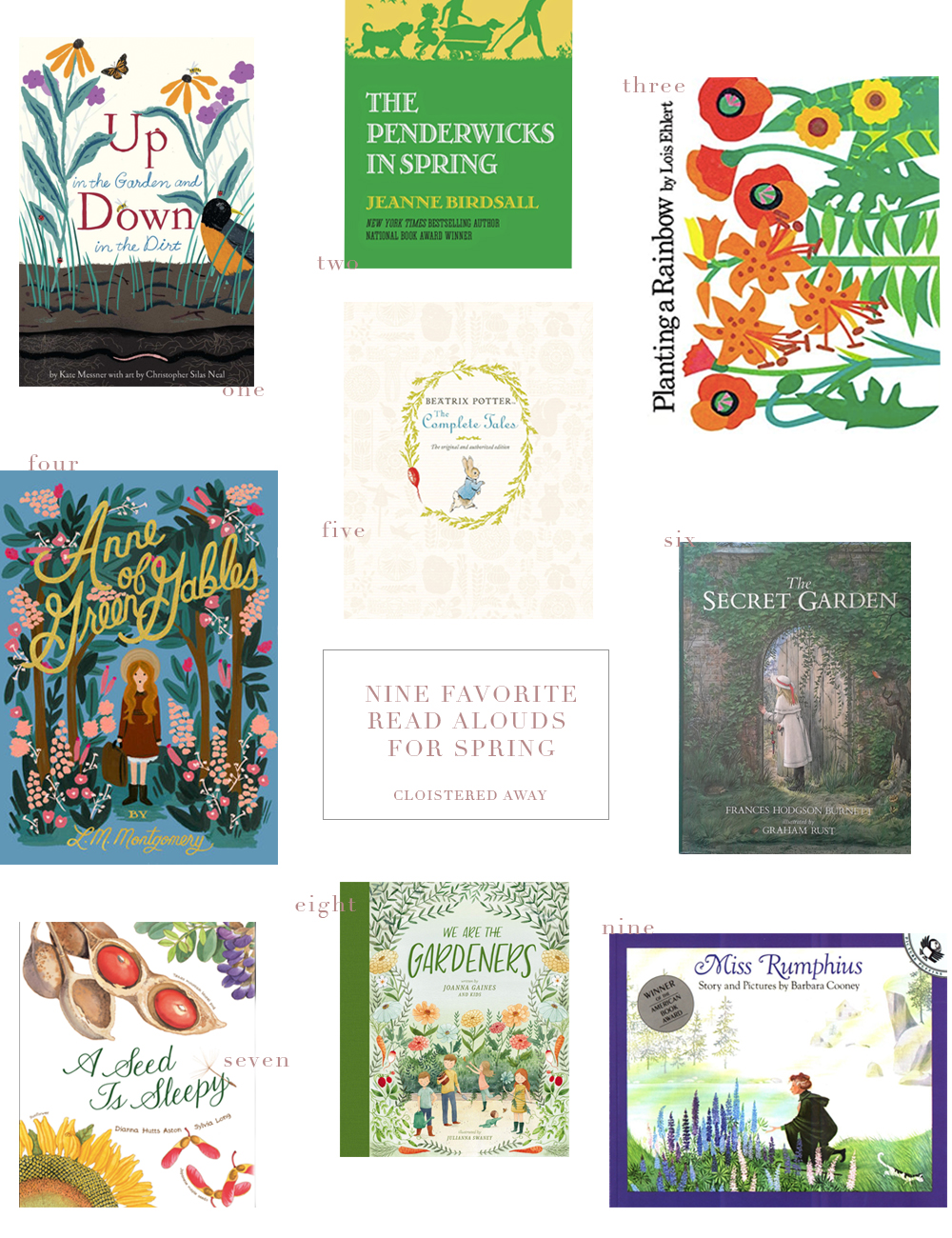
Comments
Even as someone who is not a parent, I have loved reading these posts. Your words have been inspiring to me since I found you a few days ago. The picture of your daughter participating in her “sleepy morning reading practice” looks so cozy. I would love to recreate the feel at home in my own bedroom. Do you mind me asking where you purchased your bed linens? I’ve been looking but can’t seem to find anything quite so inviting.
Thank you so much, Shae. We’ve actually had these same linens for years. I’ve even been thinking lately it’s time to freshen up a bit, but I like that white layers have held their own. the duvet and shams are an organic cotton set from West Elm years ago. I know they don’t carry it any longer, but I’m sure they have something similar. The sheets are from Costco years ago as well (high thread count, their brand). I bought two sets that I rotate, and they have worn so well and are incredibly soft now. I’m sure they carry the same or something similar. I hope this helps!
I actually did find some beautiful linen duvet covers at West Elm but the fabric wasn’t as soft as I had hoped once I sought them out in person. I ended up buying a duvet cover for our guest bedroom from Pottery Barn but am still searching for the perfect one for my own bed. I know it’s out there somewhere. :)
Thanks so much for taking the time to write!
Bethany,
I am always so eager to read your posts – especially the ones concerning homeschool. This is my first year to homeschool our two girls – kindergarten and third grade. While I have heard and read many great things about Classical Conversations, I didn’t want to commit to anything this first year. However, I’ve been contemplating whether or not we should go ahead and join for next. I go back and forth on the pros and cons of such a commitment. I would love to hear your thoughts on it! Thanks for sharing – you’ve been a real inspiration to me this year. I can’t tell you how many times I’ve pulled up your pictures or read your words and been reaffirmed in this calling to homeschool. Thank you, thank you!
Bethany, thank you for sharing English Lessons through Literature. I think you told me about it over IG – I’m noticing it’s a different title than what is listed in this post (Reading Lessons vs English Lessons) but I finally had the chance to sit down and explore it and it looks fantastic! I’m wondering if I should check out Reading Lessons…. as well? Thanks for sharing! I appreciate it!
Yes, they’re different. English Lessons is more focused on writing and grammar, while Reading Lessons focuses on reading and spelling. Reading Lessons has been good for simplifying our routine, and is similar to the Spaulding method and All About Reading, which I’ve used for years. It was a good fit for us, and I just add in things I want her to learn that I feel are missing or need to be filled in for us a bit better. Does that make sense? I think I explain a bit in the comments here.
I’m always so inspired by your posts Bethany! Thank you for sharing little pieces of your life.
Thank you so much, Hannah. Will you be at W+F this spring?
I love you homeschool posts. My son is only 2, but I would love to homeschool when he reaches school in age.
I love The Wingfeather Saga books- so great! Out of pure curiosity, how have you handled the adult language present in The Martian? I was never allowed to read books like that when I was young, but actually wish that I would have been guided through it a little differently for the purposes of handling myself with greater maturity and tact as I got older.
It’s funny you bring this up. Liam’s first comment about it was “there’s a lot of negative language in this one, so I think it’s best that Burke doesn’t read it yet.” I laughed aloud at the adult-like sentiment. Honestly, we’re fairly liberal about the language in stories and continue to have conversations about it. We regularly discuss the power of words here, and also using them in a way that doesn’t hurt or offend others. So these sort of things fall into those conversations. I more often filter reading content for darkness of content/imagery and sexuality and violence. It depends on the child and the book.
Thank you so much for these posts. We are in the infancy of our homeschool journey and I really appreciate the practical look-see you are giving your readers. I am enjoying your links to great materials and such. Thanks for that. Here’s one for Burke and Blythe (and everybody really because it’s FASCINATING) on the very cool subject of ancient medicine:
https://www.radiolab.org/story/best-medicine/
Perfect Emily! Thank you so much for sharing. They’ll love it.
I love reading your posts like this! Thanks for sharing.
I’m so glad to hear it, Rachel, so thank you for taking the time.
I can’t even tell you how obsessed I am with the life/home you have created! So much inspiration! So Raw and So Real! I can’t wait to get my hands on “Simple Matters!” Thank you for sharing! I’m ALWAYS searching for good recommendations for children’s books! Your amazing!
Misty, what a beautiful (and enthusiastic) sentiment. Thank you! Simple Matters is beautifully written and laid out. It always inspires a new project, and is an easy resource to flip through when I have time. I’m so glad you’re enjoying the book recommendations. I always love hearing what others are reading, too, so feel free to share when you have time. x